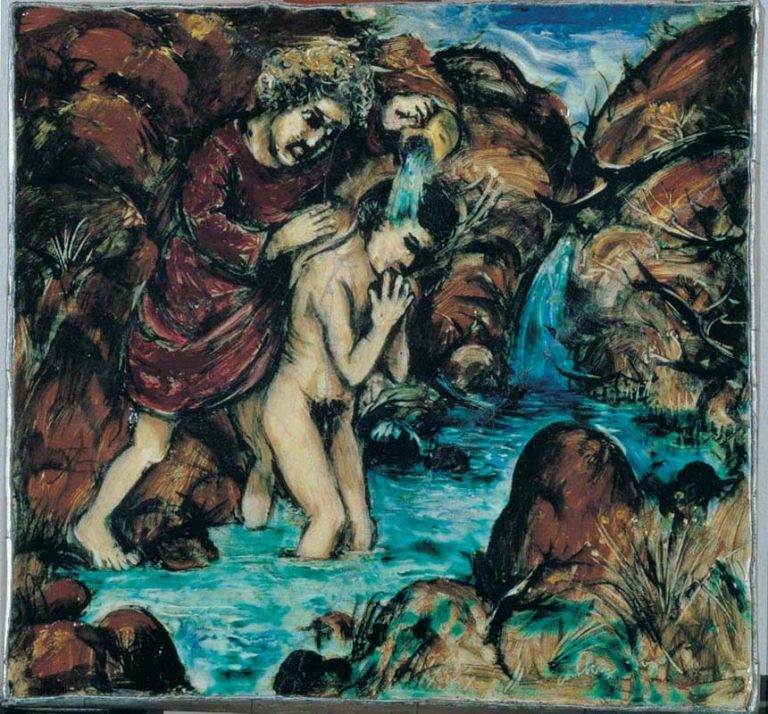We acknowledge the Traditional Owners of the land on which the Queensland Art Gallery | Gallery of Modern Art stands and recognise the creative contribution First Australians make to the art and culture of this country.

Arthur Boyd / Australia 1920–99 / Tile: Baptism c.1947 / Earthenware, polychrome enamel on white clay tile with clear glaze / 43 x 41 x 2.5cm / Purchased 1954 / Collection: Queensland Art Gallery / © QAG
Arthur BoydTile: Baptism c.1947
Not Currently on Display
Arthur Boyd is arguably the most pictorially and creatively inventive of the twentieth-century Australian painters.
Born in 1920 in the Melbourne suburb of Murrumbeena, he entered into a family of painters, printmakers, potters and sculptors. From the age of 14 he lived at Rosebud on Victoria’s Mornington Peninsula, with his grandfather, landscape painter Arthur Merric Boyd. It was here that he began to paint full-time. Boyd was conscripted into the army in 1941 and, though he did not actively serve in World War Two, the influence of war on his work is evident in the symbolism and atmosphere of psychological torment throughout his oeuvre.
During his travels through central Australia in 1953, Boyd was exposed to the disparity of living conditions between Indigenous and white Australians. In 1959 he moved to England, returning to Australia in 1968. His 1973–88 paintings were chosen as the first to be exhibited in the new Australian Pavilion at the 1988 Venice Biennale.